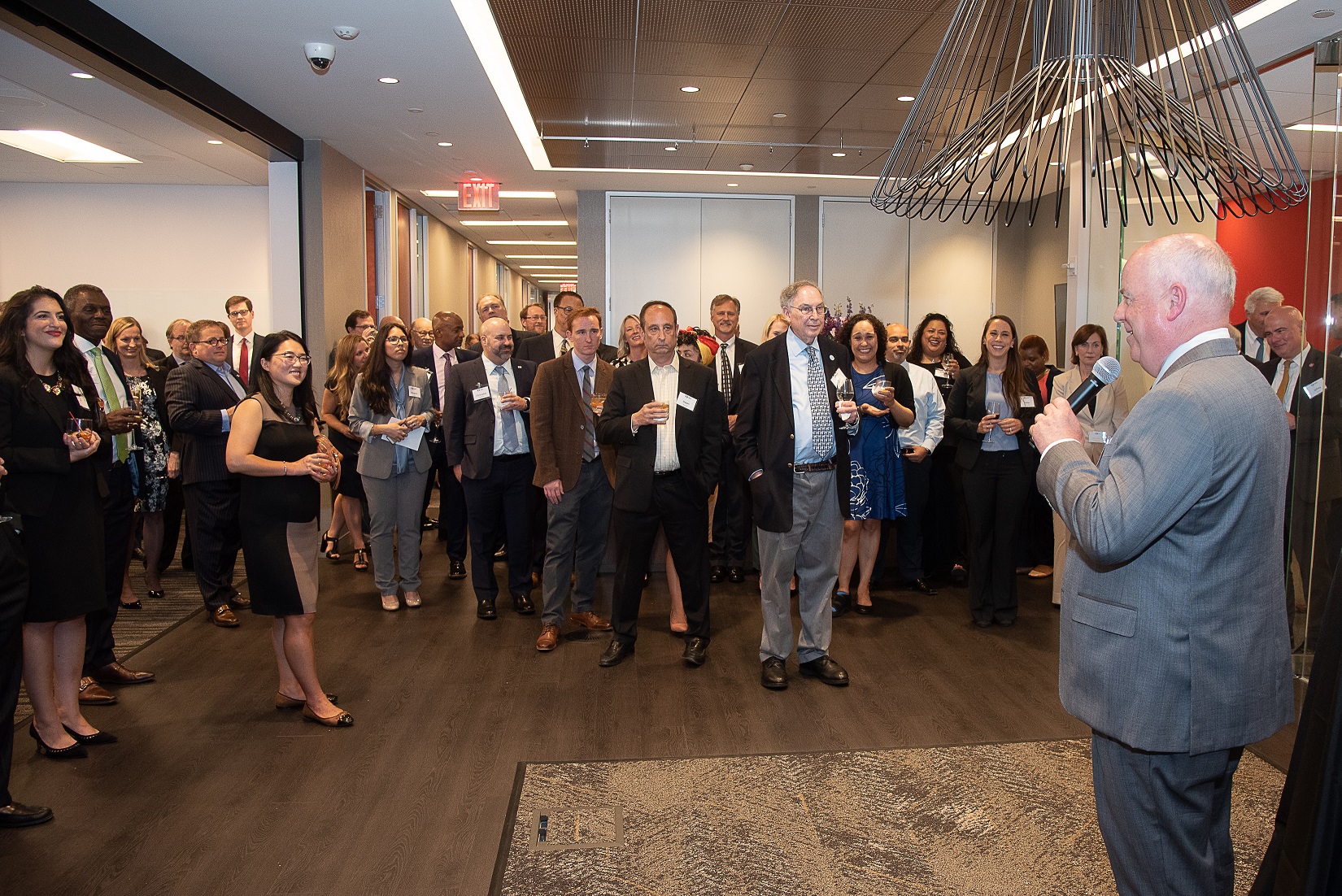JAMS is Prepared for the Challenges Ahead in International Arbitration
Global trade and foreign direct investment are trending downward in 2019. Ranse Howell, director of international operations, talks about the implications for international arbitration.
In early June, on the 16th floor of the New York Times Building, JAMS officially opened its latest international arbitration center. At 35,000 square feet, with 18 hearing rooms, translation booths and arbitrators’ lounges, it’s the larger of the two new JAMS facilities (the other is in Los Angeles), reflecting the relative prominence of the two cities as seats of international arbitration.

We’ve spent months working with architects, interior designers and facilities managers reviewing soundproofing, signage, acoustics, videoconferencing—even door handles—and we’re pretty confident that these facilities are among the best in the world. The official opening drew many guests, not only from New York and the surrounding areas, but also from across the country.
In a plateauing international arbitration market, the new center represents a bold statement of intent and a welcome endorsement of the future of U.S.-seated international arbitrations at time when others are waiting to see how Brexit plays out and what effect it may have on the competitive rivalry between international seats. It’s a dynamic situation, but both the demand for, and demands on, facilities continue to rise. Those matters that reach hearings now tend to be more complex than in previous decades, with much bigger counsel teams that are vastly more demanding of technology. I don’t see that trend slowing down, and our aim is to exceed those expectations by providing a comfortable, highly functional space for the duration of what are often quite lengthy hearings.
In regard to the company’s investment in international arbitration, the volume of institutional cases does appear to be leveling off, which is the result of two distinct elements that we don’t believe are necessarily correlated. They’re partly the product of cyclical headwinds governed by global political and economic trends, and we’d expect some fluctuation in demand, like any industry. But the more significant component, we believe, is the depth of market penetration of international arbitration. In terms of product adoption, although the market can now be considered mature in places, it’s still transitioning between early adopters and an early majority. The wider diffusion of the process is what will drive growth.
Market Penetration
Many organizations instinctively default to litigation of cross-border disputes, particularly in contracts between developed nations, and we’ve seen a steady uptick in cross-border mediations spun out of the more “international” courts in London and New York. But a more robust, more long-standing trend—for reasons of expedition, enforcement and expertise—is toward greater use of international arbitration. There are entire industries that have yet to meaningfully engage with international arbitration, but JAMS believes that there is always a compelling case to be made for quicker, more cost-effective dispute resolution. Whether directly through international arbitration or in combination with mediation, businesses everywhere are seeking more consensual, more collaborative means of resolving their differences. That represents a stronger, more long-term trend than some of the peaks and troughs we’d expect to see on any short-term analysis.
Fundamentally, the competition between dispute resolution processes is a good thing. We’re seeing online courts, common law courts and English-language courts popping up in civil law jurisdictions and nontraditional venues, and this not only gives clients much greater choice, but it makes the rest of us up our game.
Rising to the Challenge
For now, JAMS is betting on the United States as seat of international arbitration. Adding to its facilities in New York and Los Angeles, the company is expanding its Century City (Calif.) office to incorporate international arbitration space, which is scheduled to be ready in the fall. We’re also keen to capitalize on Miami’s cross-border links with the Caribbean and Latin America, and hope to be making an announcement soon about investment in another international arbitration center there.
Can the U.S. overcome foreign parties’ fears of ending up in litigation in U.S. courts? It’s an understandable fear, and we hear a lot about jury trials, class actions and treble damages, but ultimately the best way to avoid ending up before a judge is a watertight arbitration clause. Are people actually going to turn down opportunities to do business with U.S. organizations? The answer is clearly no, but translating those concerns into positive action on ADR clause drafting is where some organizations are missing opportunities to mitigate risk.
And we can certainly help with that. We are ready for the challenge.
Disclaimer:
This page is for general information purposes. JAMS makes no representations or warranties regarding its accuracy or completeness. Interested persons should conduct their own research regarding information on this website before deciding to use JAMS, including investigation and research of JAMS neutrals. See More
